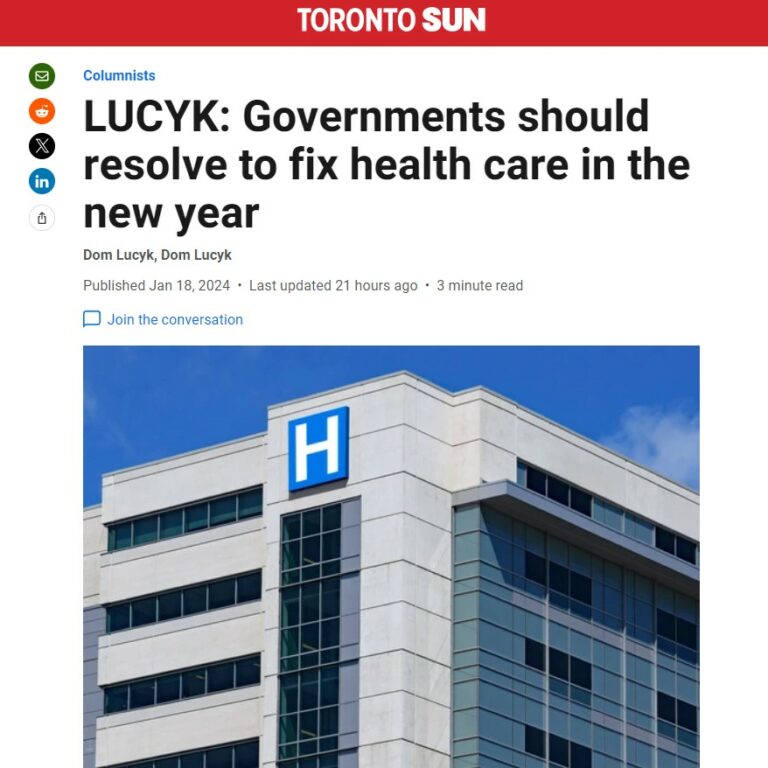TORONTO SUN COLUMN: Governments Should Resolve to Fix Health Care in the New Year

Governments across Canada should all buckle down and stick to one simple New Year’s resolution.
Do something to fix health care.
As we look ahead to 2024, it’s hard to imagine the health crisis not getting worse. The trends are all pointing in the same direction. Fortunately, solutions that could improve the system are well documented.
Last year, waiting list deaths hit a five-year high since SecondStreet.org started tracking this important data – over 17,000 Canadians died waiting for surgery or a diagnostic scan in 2022-23. The Fraser Institute reported that the average wait for surgery has gone up to 27.7 weeks — up from just 9.3 weeks in 1993.
Those are just a couple of signs that the system is failing. It gets worse when you look at everyday Canadians’ stories.
For example, consider Dan Quayle’s story. The 52-year-old Vancouver grandfather was suffering from crippling pain while on a waiting list for chemotherapy. His doctors told him the cancer treatment could give him another year to live. The problem was that they never told him when he would receive the treatment.
So, he suffered and languished on a waiting list. After 10 weeks, he chose the government’s assisted suicide program and is no longer with us.
One can already hear the response from some politicians and activists: “There’s just not enough money in the system!”
Funding is not the problem.
Canada has been pumping money into health care for decades, with no improvement. In 1993, governments spent about $1,700 per person on average — that number jumped to over $5,700 by 2023, according to the Canadian Institute for Health Information.
That’s nearly double what it would take to keep spending on pace with inflation.
It’s clear that throwing money at the problem has not helped. So, what can be done?
There are many ways governments can make meaningful changes. For one, keep the universal system, but give patients the right to pay for care at local private clinics if they choose. Currently, except for Quebec, a series of regulations outlaw patients from paying for surgery at local private clinics.
Every developed country with better health outcomes than Canada does not have such barriers. Sweden, France, Australia and others allow private options as they not only provide patients with more choice, but lead to less pressure on the public system each time patients decide to pay for private care.
Another option is to make traveling for care more accessible. In the European Union, patients have the right to travel to another EU country for care, pay for it, and then be reimbursed for up to what it would have cost to have the procedure done in their home country.
This just makes sense. Patients who choose to travel can access the care they need, while everyone behind them on the waiting list moves up a spot. It’s also basically cost-neutral in the medium term — the government is paying the same amount for the surgery but it’s just doing it earlier. Canadians love this idea. A SecondStreet.org poll shows 74% are in favour of their province copying this policy.
New Year’s resolutions are tough to keep. Everybody knows someone who bought a gym membership on Jan. 2 and has already stopped using it. Still, as we get settled into 2024, it’s more important than ever for governments to resolve the health-care crisis.
Lives are at stake.
Dom Lucyk is the communications director with SecondStreet.org, a Canadian think tank.
This column was originally published in the Sun newspapers on January 19, 2024.
You can help us continue to research and tell stories about this issue by making a donation or sharing this content with your friends. Be sure to sign up for our updates too!


